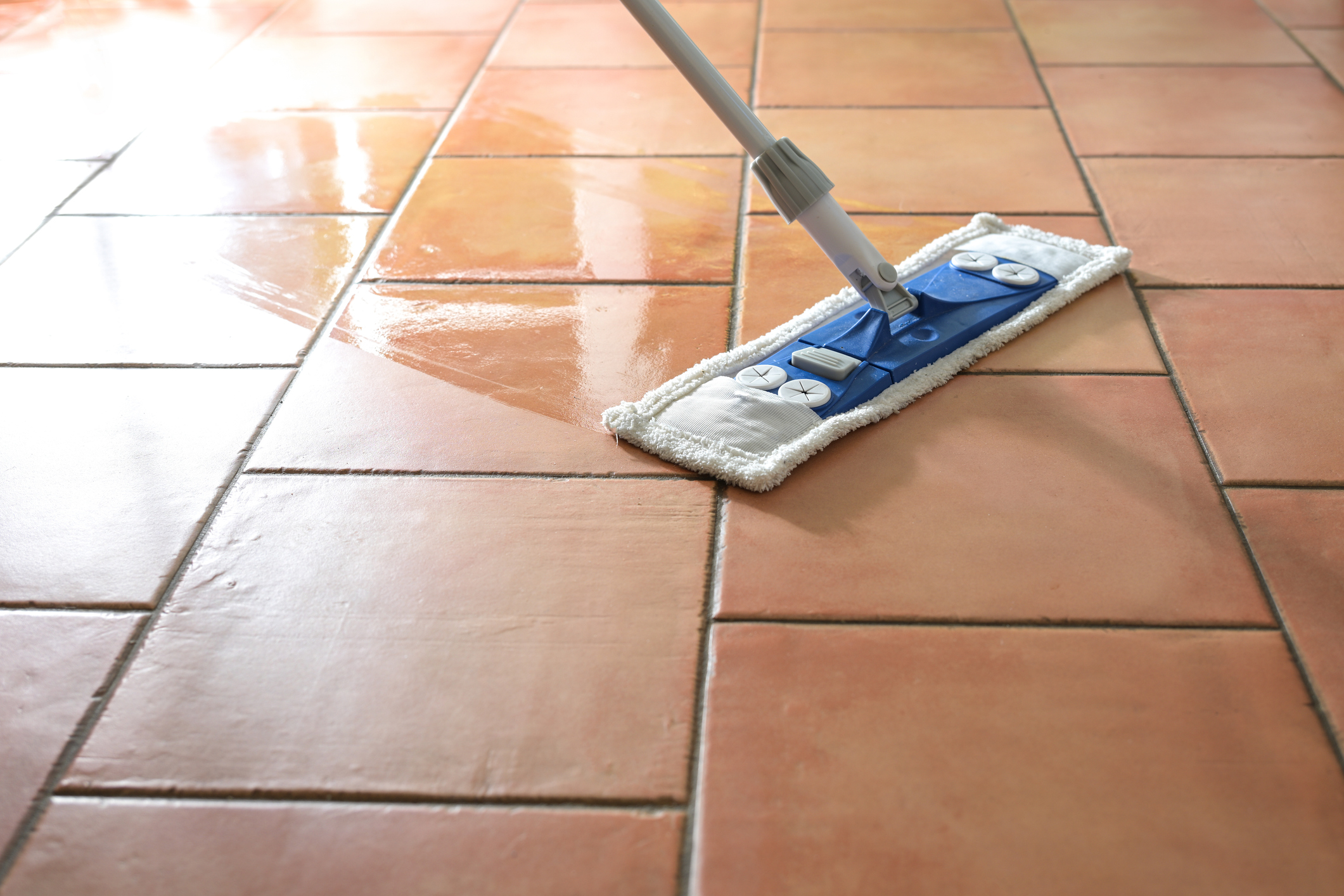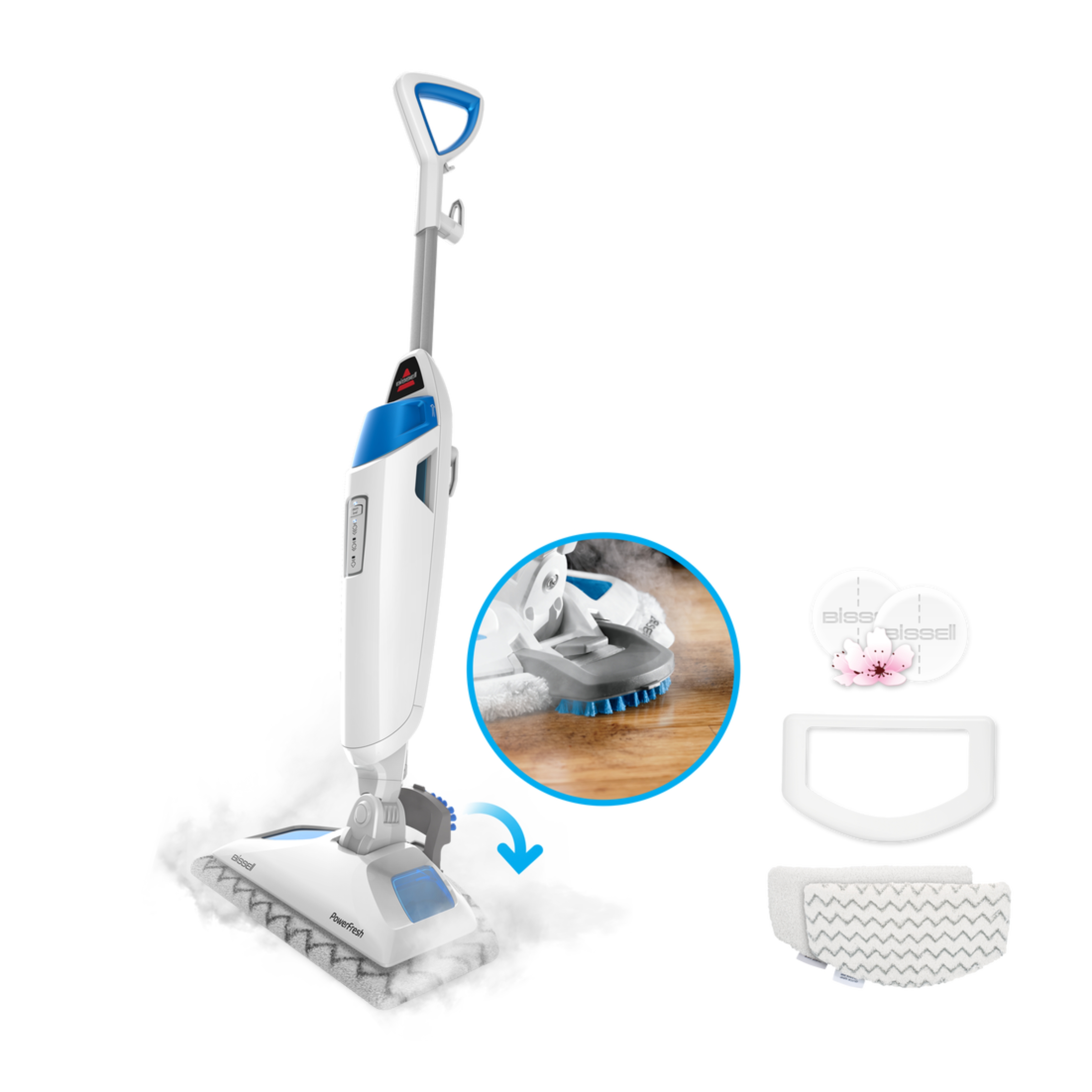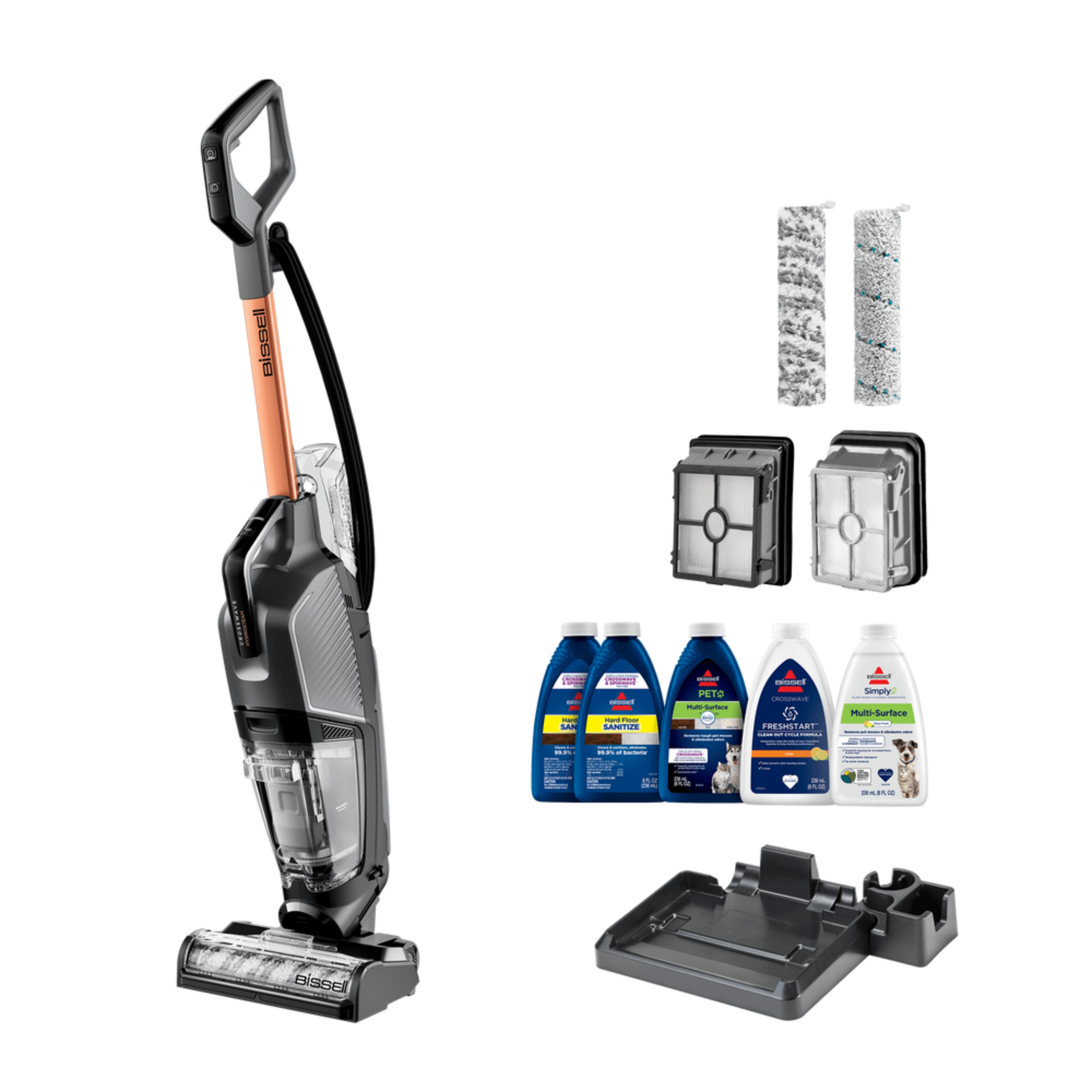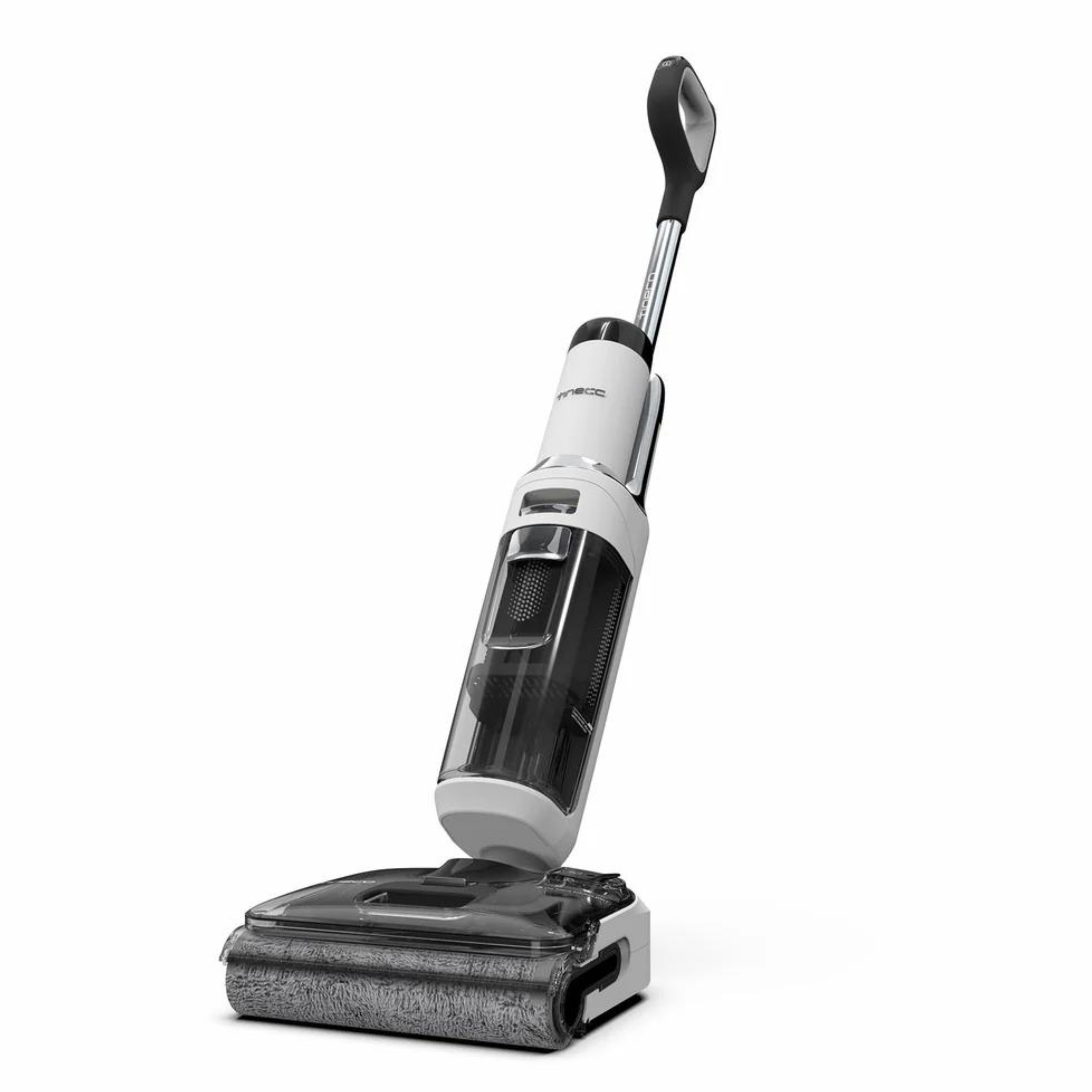Mopping vs wet vacuuming – which is the better cleaner for your home? I'm a home tech editor and spent hours testing products to answer this for good
I've tried mopping vs wet vacuuming and think it's time to ditch your mop

Wet vacuuming has taken off in recent years as homeowners are realizing that all the time spent mopping and scrubbing can actually be saved with a smarty, handy appliance.
But how well do wet vacuums actually clean the floor? Mops are so effective because they scrub detergent into our hard floors, deep cleaning and getting into the grooves and cracks, so as a starting point, we want wet vacuums to achieve at least the same results.
Replacing a mop might be one of the many reasons to upgrade to a wet/dry vacuum, but first we need to understand whether they're as effective as they claim. As H&G's home tech editor, I've spent hours testing wet vacuums and floor care products myself to see how well they work, whether they are worth the money, and if it's time to finally ditch your mop.
Mopping vs wet vacuuming
To dive into all the differences between mops and wet vacuums, I gathered insight from experts and professional cleaners as well as testing appliances out for myself.
An important distinction: where I reference 'wet vacuums' in this article, I'm referring to those with clean water tanks and brush rolls that serve as floor cleaners, rather than the more rugged types like the Shark MessMaster we reviewed.
For more information on those, delve into our dedicated guide on things you can clean with a wet/dry vacuum.
The pros and cons of mopping

'Mopping is a more affordable option,' says Nick Valentino, VP of market operations at Bellhops. 'Anyone with a mop, a bucket, some water, and some soap can get it done, whereas wet vacuums are expensive.'
Design expertise in your inbox – from inspiring decorating ideas and beautiful celebrity homes to practical gardening advice and shopping round-ups.
That being said, mopping is much more labor-intensive and time-consuming compared to wet vacuuming. 'If you’re mopping a huge kitchen or a big floor space, you’ll keep dunking that mop in the water, wringing it out, and then starting all over again,' says Rhonda Wilson, quality lead cleaner at FreshSpace Cleaning. 'And that’s tiring, too!'
Adding to the time-consuming nature of mopping is water replacement. For a truly clean floor, you'll want to replace the bucket water regularly so that you're not recirculating the dirty water across your floors. Wet vacuums do this automatically, utilizing separate water tanks for clean and dirty water so that the water that touches the floor is always clean.
However, as mops are powered by you, you can decide how much force you want to apply when cleaning, meaning it's easier to deep clean the grooves and cracks in your floors. You can also be more liberal with how much detergent you can use so that your floors are as fresh and sanitized as you'd like, whereas wet vacuums typically can't handle too much detergent, if any.
As Logan Taylor, professional cleaner and founder of Dazzle Company puts it, 'Mopping is a tried-and-true method that can effectively remove dirt and stains from floors. It involves in-depth cleaning that can reach into cracks and crevices, ensuring a thorough cleaning.'
There are different types of mops, too, with some able to clean more deeply (with less effort) than traditional mops, while still being more affordable than wet vacuums.
'In my experience, good steam mops are an excellent option for deep cleaning and sanitizing hard floors, such as tile, hardwood, and laminate,' explains Logan. 'They use hot steam to loosen dirt and grime while killing bacteria and germs.' For a deep clean and a minimal spend, steam mops are a strong option.
You also don't need to use any chemicals as the steam takes care of bacteria and is brilliant and loosening stains and grime.
The pros and cons of wet vacuuming

'Wet vacuuming combines vacuuming and mopping in one device, making it more efficient and capable of deep cleaning,' explains Lina DaSilva, professional cleaner and founder of Toronto Shine Cleaning. 'It also dries floors quickly by sucking up the water,' she adds, as wet vacuums are able to suck up liquid spills and dry debris.
This is why wet vacuums are becoming so popular: they're convenient, can deep clean, and do most of the work for you. They'll usually use a brush roll (or two) that sweeps the floor, sucking up any wet and dry debris while mopping the floor in the process. They'll also have points within the brush rolls that dispense clean water so that your floors are always being treated with fresh water throughout cleaning.
'Wet vacuuming is efficient and requires less physical effort, making it a great option for larger areas or heavily soiled floors,' says Logan. 'Wet vacuums also have different attachments and settings that make them versatile for various surfaces such as carpets and hard floors. It also has the added benefit of extracting excess water from floors, reducing drying time.'
I can attest to this from personal experience. From using Dyson's and Tineco's cleaners, I'm enjoying how easily and quickly I can clean all the hard floors in my home. They even have self-cleaning stations that make sure the brush rolls stay hygienic and sanitized for next time, without you having to do anything yourself (other than replacing them when necessary, typically every six months or so).
But importantly, wet vacuums are expensive. For one that'll comprehensively clean your floors, you'll be spending a few hundred dollars.
Which should I buy?
Sticking with your traditional mops is the affordable option. It will deep clean your floors but take time and lots of manual labor to do so. For a cheap upgrade, a steam mop requires less effort and is able to sanitize your floors, as Lina puts it:
'For steam mops, basic models are great for sanitizing and light cleaning but may lack the power for deeper cleaning, advanced steam mops offer features like adjustable steam levels and attachments for different surfaces.'
Wet vacuuming brings sweeping, vacuuming and mopping together (but not steaming). It's a convenient and comprehensive method that demands little effort from yourself, and they use separate clean water tanks so that your floors are always seeing fresh water. But this comes at a steep cost, so it's worth weighing up whether the convenience and deeper cleaning is worth the hundreds.
If you're looking for a steam mop, Logan Taylor recommends the Bissell PowerFresh Steam Mop. For a wet vacuum, Lina DaSilva and Nick Valentino both coincidentally recommend the Bissell CrossWave HydroSteam Plus. We've reviewed an older version of the Bissell CrossWave HydroStream and had excellent results, resulting in a rare five stars from us after thorough testing.
Although Bissell comes up a lot in the floor care conversation (it's worth taking a look through Bissell's full range), I would personally recommend the Tineco Floor One Stretch S6. I'm currently midway through testing it but already love how efficiently and effectively it tackles hard floors.

Recommended by Logan Taylor, professional cleaner and founder of Dazzle Company, who says, 'I have had great results with the Bissell PowerFresh Steam Mop for deep cleaning and sanitizing floors. It has different settings for various floor surfaces and comes with a detachable handheld unit for versatile cleaning.'

Recommended by Lina DaSilva, professional cleaner and founder of Toronto Shine Cleaning who says, 'I suggest the Bissell CrossWave for its versatility and ease of switching between hard floors and area rugs, it's a powerful wet vacuum that provides excellent multi-surface cleaning.' Nick Valentino from Bellhop agrees, adding, 'I've been especially impressed with this.'

From my own testing experience, I recommend the Tineco Floor One Stretch S6. It's a comprehensive hard floor cleaner that's flexible enough to reach under furniture (and can maintain cleaning power at this 180 degree angle). It has separate clean and dirty water tanks, as well as a separate debris container.
Next, discover things you can clean with a steam mop besides the floor.

Dan is the Home Tech Editor for Homes & Gardens, covering all things cleaning, sound, smart home, and air treatment across the Solved section.
Having worked for Future PLC since July 2023, Dan was previously the Features Editor for Top Ten Reviews and looked after the wide variety of home and outdoor content across the site, but their writing about homes, gardens, tech and products started back in 2021 on brands like BBC Science Focus, YourHomeStyle and Gardens Illustrated.
They have spent more than 400 hours testing and reviewing vacuums, soundbars and air purifiers for Homes & Gardens.
Dan has a BA in Philosophy and an MA in Magazine Journalism. Outside of work, you'll find them at gigs and art galleries, cycling somewhere scenic, or cooking up something good in the kitchen.
